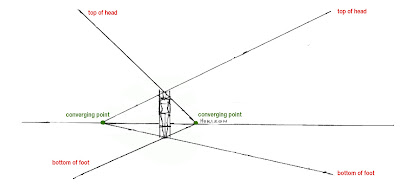The charcoal pencils and smooth newsprint (I've never used smooth newsprint before, only rough) arrived yesterday. I was so eager to start that I spent an obscene extra 50+ bucks to have them delivered in 2 days.
But it was worth it! Opening the boxes reminded me of being a kid on Christmas morning!
I'm now officially working towards my goal of quickly and thoroughly building a foundation of drawing fundamental skills.
I started at the beginning with the Fundamentals/Drawing Fundamentals Phase I section. After watching the Intro and Materials videos (helpful tips: only use single-edge razor blades for pencil sharpening; and buy them at a hardware store, not an art supplies store which has higher prices UNLESS you live in Brooklyn like me in which case the art supply store is cheaper than the local hardware store. Who knew?), I moved on to the Sharpening Your Pencil video.
Jeffrey Watts teaches a specific method of sharpening that involves scraping the wood of the pencil with one hand while rotating it with the other to create a smooth taper from wood to charcoal. Then more scraping to taper the charcoal and the option of finishing the charcoal taper with sand paper, the step I found to be essential to getting that nice taper.
My first try began like this:
 |
| Hmm…a bit chunky and rough. To be expected for a first try. |
Eventually I got to this:
 |
| Improving. |
Then finally to this:
 |
| Not bad for the first try. The next attempts will taper the wood into the charcoal better. |
By the end of the evening, I had my proud collection:
 |
| Once you do one you do NOT want to stop! |
It can be messy:
 |
| Blech! |
I tried using cotton gloves but they interfered with my grip on the blade. Other issues: the fingers get stiff from gripping the blade and twirling the pencil but I think with time and enough doses of glucosamine sulfate and chondroitin sulfate in Hammer Nutrition's Tissue Rejuvenator, I should be all right.
Then there's the charcoal dust. I wear glasses and therefore convinced myself that the dust wasn't getting into my eyes despite some irritation. When I blew my nose, however, there were black specs so obviously I'm inhaling this stuff. I think I have a solution: I'll wear a mask and will pick up at the hardware store a pair of goggles in addition to the razor blades.
 |
| Beginning tools. |
I can't express how excited I am to be on this journey of progress. Thanks for joining me in it!
And if you're enjoying these posts, please become a Follower by clicking the button on the right. Thanks, I appreciate it!












































